Looking for the best places to visit in Andalucia Spain?
Look no further!
I’ve traveled the region extensively and whether you’ve been here multiple times or it’s your first visit, there are so many incredible Andalucia must-see destinations and attractions to explore.
After living in Andalucia for over 10 years, I still find new exciting gems to discover, especially now as we’re slow traveling by camper van.
So in this post, I’m sharing my favorite southern Spain places to visit from the obvious, like Seville and the majestic Alhambra palace in Granada, to impressive natural parks with staggering nature and whitewashed villages.
Disclosure: This post may contain affiliate links. That means that if you make a purchase through one of those links, I will get a small commission at no extra cost to you.

I’m Linn Haglund, the face behind Amused by Andalucia! I’ve been based in Andalucia, Spain for the last 10+ years, mainly in Seville and Costa del Sol while exploring the region extensively. Since 2022, I’ve slow-traveled in my van with my fiancee and dog, spending significant time in each place to truly get to know all the hidden corners of this exciting and diverse region. I’m here to help you uncover Andalucia too!
Make sure you pin it for later!
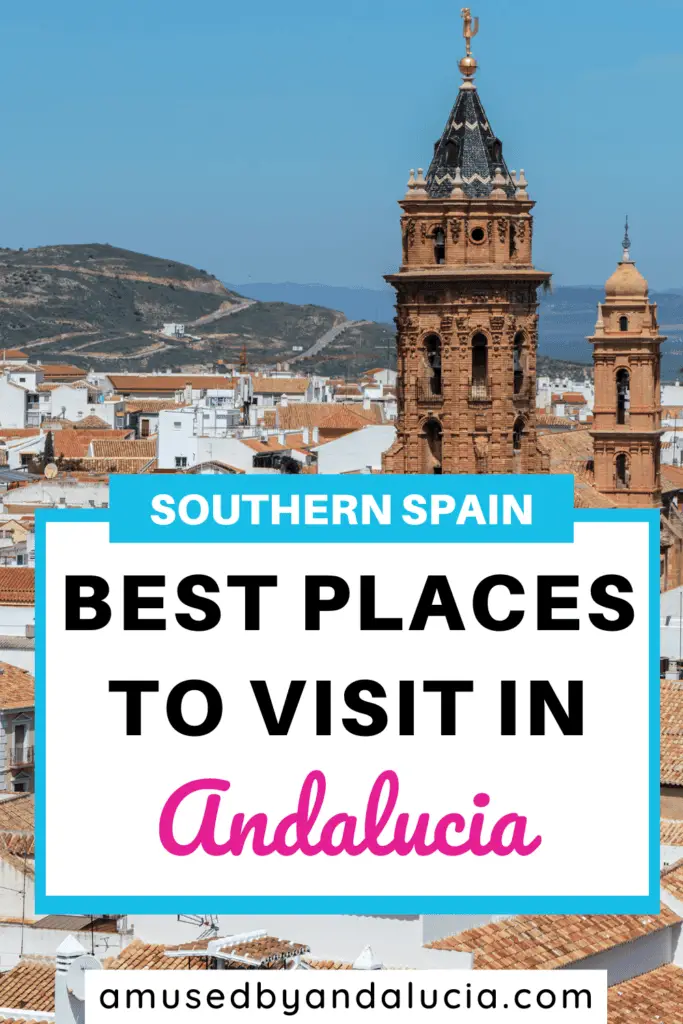
Table of Contents
Best places to visit in Andalucia Spain
Seville
First things first. Seville is the impressive capital city of Andalucia and it’s full of culture and history. There are so many things to do in Seville from visiting the UNESCO-listed Real Alcazar and Seville Cathedral with its iconic Giralda Tower to seeing the views from the city’s newest monument, the Metropol Parasol.
My favorite attraction in Seville, though is Plaza de España. The beautiful half-circle square is decorated with beautiful Andalusian tiles from Triana and you can take a row boat trip in the little canal.
Watch a Flamenco show and eat all the tapas to make sure you get a true taste of Seville. While Barrio Santa Cruz is very touristy, I never get sick of walking around the bustling neighborhood.
Full of restaurants, bars, and Flamenco joints, it’s a wonderful place to be and even if you only have one day in Seville I recommend going there for lunch.
Finally, make sure you go on a boat tour in Seville’s Guadalquivir River to see the city from a different perspective.
Read before you go:
- How to get from Seville Airport to the city center
- Where to stay in Seville
- Free parking in Seville
- How to get Seville Cathedral tickets

El Torcal de Antequera
El Torcal de Antequera is a true must-see in Andalucia being one of the most unique karst landscapes in Europe.
It’s located a 45-minute drive inland from Malaga on the road to Seville and contains 3 different hiking routes. One takes you from the bottom car park to the visitor center and can be combined with either of the other two which are 45 minutes and 2 hours long.
I prefer the Yellow Route which takes 2 hours. Besides the mesmerizing landscape you’ll witness even if you just walk to the viewpoint and stay around the visitor center, you will be met by varied vegetation and even squeeze through the rock walls in a natural open ceiling tunnel.
We just did this hike the other day and even though the weather was crap, it’s just as magical. El Torcal de Antequera is also the only place in Andalucia where I Always see wild mountain goats – and I’ve been there more times than I can count!
While they’re used to people, remember that they’re still wild animals. Make sure you respect them, don’t feed them, don’t chase them, or scare them. Just be still and enjoy the magic of the moment.

Ronda
Ronda is truly one of the most beautiful places in Andalucia with its iconic New Bridge holding the dramatic El Tajo Gorge together.
There are so many things to do in Ronda besides seeing the New Bridge, though. There are two other older bridges down the gorge, an Arab Bath, and a number of palaces.
You can also stroll along the old Moorish city walls and there are endless viewpoints where you can take in the impressive countryside surrounding Ronda.
Serrania de Ronda is also a fantastic wine region. Going on a Ronda wine-tasting tour is also a wonderful idea and you can combine it with a Ronda day trip if you don’t have more time.
Ronda is actually one of the oldest settlements in Spain and you can explore the old city at the Acinipo Ruins not too far from the town. There are also a lot more beautiful white villages near Ronda making it a wonderful base for day trips.
Read before you go:
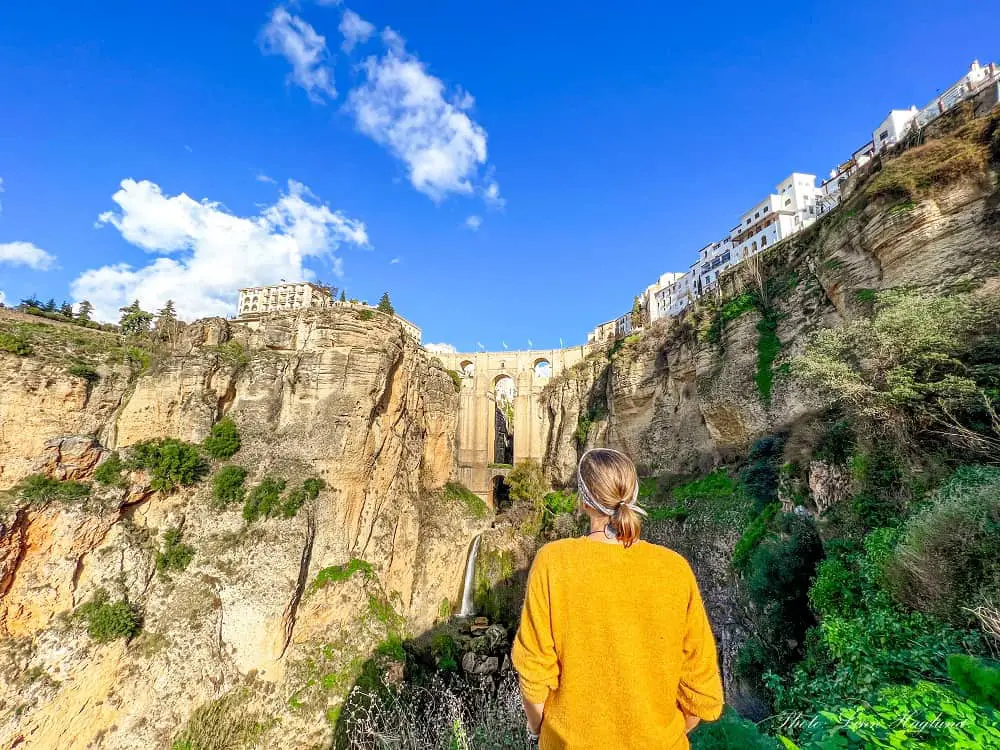
Malaga
Malaga is by far one of the most popular cities to visit in Andalucia and not without a reason. The beautiful coastal city boasts spectacular beaches, like Malagueta Beach, and Malaga Old Town is jam-packed with beautiful architecture, historical sites, and interesting museums. This is where you find the best things to do in Malaga.
Make sure you visit Malaga Cathedral and the Alcazaba of Malaga which sits above the Roman Theater, which is one of the top free things to see in Malaga. Looming over the Alcazaba, you find the magnificent Gibralfaro Castle that was built to protect the Alcazaba.
Muelle Uno is Malaga’s modern marina full of restaurants and shops and a small year-round market. There, you can jump on one of Malaga’s boat tours to explore the coastline from the water.
There are also many epic day trips from Malaga to nearby towns and villages. Being located in the heart of Costa del Sol, you’re spoiled for options!
Read before you go:
- Where to stay in Malaga
- Where to find free parking in Malaga
- How to get Alcazaba Malaga tickets
- Malaga one-day itinerary
- Beautiful parks in Malaga
- Where to stay near Malaga
- Best time to visit Malaga
- Christmas in Malaga
- Malaga in December
- Malaga in winter
- Where to eat vegan in Malaga
- Which city is best Malaga or Marbella
- Day trip to Gibraltar from Malaga
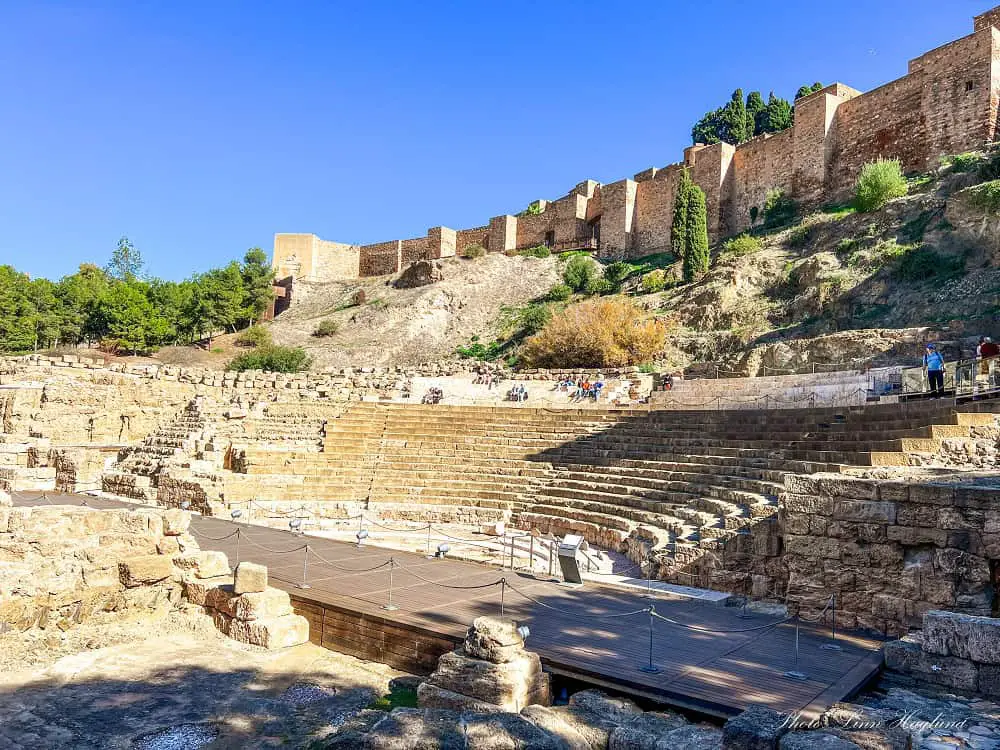
Rio Tinto
When looking for what to visit in Andalucia that isn’t overrun by tourism, I can’t think of any better place than Riotinto in the Huelva province.
The unique Red River has been on the radar of none other than NASA for its high content of sulfide ore deposits which form acidic runoff when in contact with water or oxygen. It was formed millions of years ago when this area was volcanic.
Now, you can take an old mine train to see the Red River and the mining area. It’s really cool and one of the most underrated day trips from Seville.
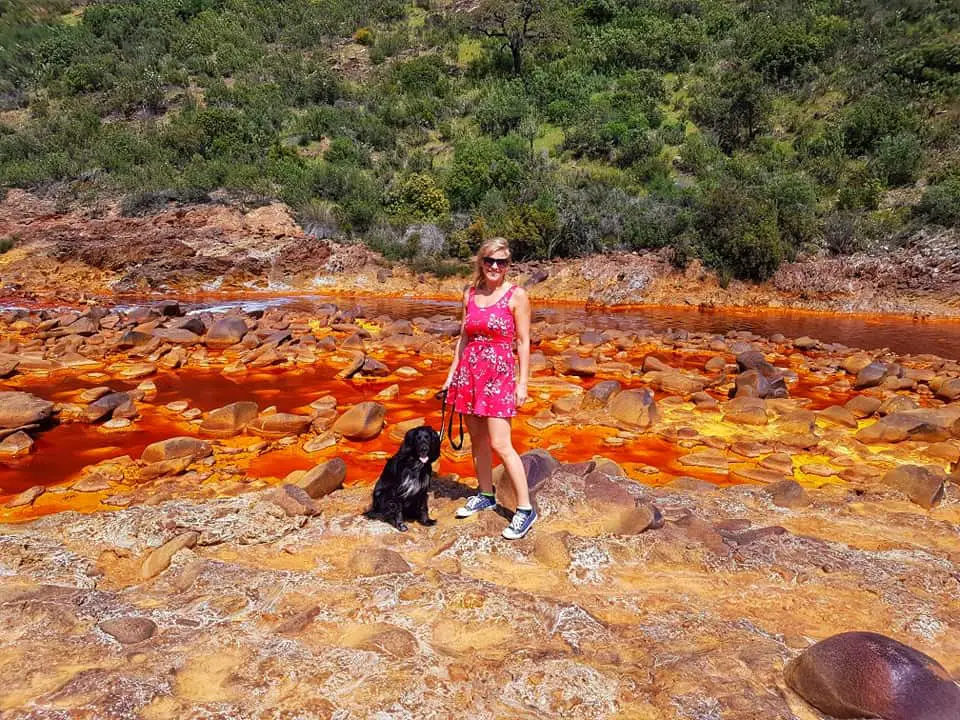
El Caminito del Rey
El Caminito del Rey has turned into one of the most sought-after tourist attractions in Andalucia. It was once seen as the world’s most dangerous hike, but after a full reconstruction, it reopened safer than ever in 2015.
The 7.7-kilometer long trail takes you along the edge of the dramatic Gaitanes Gorge with a wooden path pinned 100 meters high on the vertical wall. You can see the remains of the old path below it and it’s quite terrifying to think of walking there before it was rebuilt.
To do the walk, you must book a time slot in advance, the tickets sell out quickly, so I recommend booking early.
I wrote a complete guide to how to get there, how to get tickets, and what to expect from the hike on my hiking blog which you can read here.

Cordoba
Cordoba is another must-see in southern Spain. The city is home to 4 UNESCO sites and you should spend at least 2 days in Cordoba to see it all. However, even with a day in Cordoba, you can explore quite a lot.
The UNESCO-listed Mosque-Cathedral is one of a kind with its Christian chapels and altarpiece inside the majestic old mosque. Nearby, you find the Alcazar of Cordoba, the Roman Bridge, and the UNESCO-listed old town.
You can’t leave the city without visiting the impressive patios of Cordoba including the courtyards of the Viana Palace. If you happen to be there at the beginning of May, you’ll be able to experience the wonderful Patio Festival which also is protected by UNESCO.
There are so many amazing things to do in Cordoba. It’s also home to Andalucia’s only remaining synagogue and to the ancient ruins of Medina Azahara.
Read before you go:
- Is Cordoba worth visiting?
- Where to stay in Cordoba
- Best shopping in Cordoba
- How to get Cordoba Alcazar tickets
- How to get Mosque-Cathedral tickets
- Cordoba Patio Tour review
- Best tours in Cordoba
- Best day trips from Cordoba

Cabo de Gata Natural Park
When you go to southern Spain, Cabo de Gata Natural Park is by far one of the best places to visit! Andalucia’s volcanic and desert region is one of my favorite places to escape the crowds in summer.
The beaches in Cabo de Gata are among the most beautiful in Spain with a wonderful mix of sandy beaches meeting large dunes and remote and rocky.
There are wonderful coastal walks taking you across the rugged coastline to secluded beaches and hidden coves. In the cooler months, you can also hike inland.
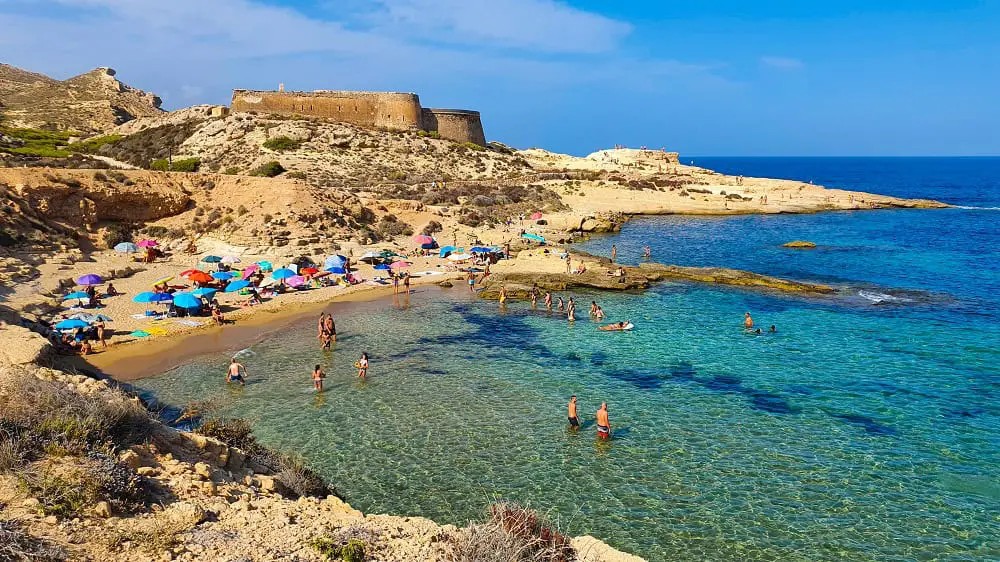
Bosque de Cobre
Bosque de Cobre (Copper Forest) is one of the most stunning places to visit in southern Spain in the fall. The chestnut forests cover the valley into an orange blanket and the Spanish flock to villages like Parauta and Igualeja to see the fall colors.
There are plenty of hiking routes you can take through the beautiful spectacles of colors. Even with small kids, you can head to Parauta and walk the Bosque Encantado trail which is fun for the little ones with fairytale figures and carved trees along the way.
The best time to see the fall colors is mid-November, though it does depend a bit from year to year. This is also a time when the rain usually starts, so I recommend following the weather forecast and going before the rain if possible as it usually flushes away quite a lot of the leaves on the trees (rain in Andalucia hardly ever comes without heavy winds.)

Antequera
Antequera is a fantastic, yet underrated city in Andalucia with plenty of attractions and hiking opportunities within walking distance from the city.
The best things to do in Antequera include visiting the Moorish Alcazaba, the Real Colegiata de Santa María la Mayor, and the UNESCO-listed Domens de Antequera.
But the town center is also jam-packed with beautiful places like the patio of the Municipal Library of San Zoilo and churches like Parroquia San Sebastián.
Besides, you’ll want to chase the best views of the Lover’s Rock which resembles a giant Indian head. You can also hike to the top if you love a bit of a scramble.
Among my other favorite hikes, I’d recommend Camorro Alto which is the highest peak in Antequera and offers sweeping views of the city and surrounding countryside, the trails of El Torcal de Antequera, and Sendero de las Arquillas which is an old Roman water route.
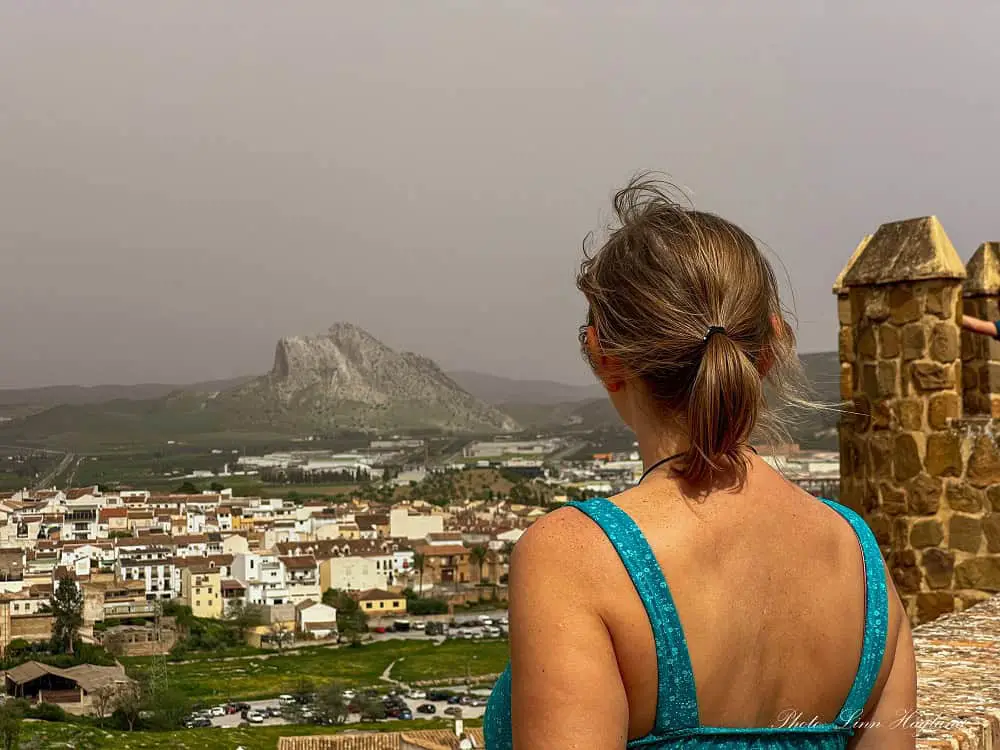
Nerja
Nerja is a lovely beach town near Malaga with beautiful beaches, spectacular hikes, and prehistoric caves. While it is quite touristy, it’s still one of my favorite places to visit in Andalucia as it’s got a lovely vibe and the water is crystal clear.
Snorkeling and kayaking in Nerja is a must as it is located right by the mesmerizing Maro nature reserve.
Among the best things to do in Nerja, you can enjoy refreshing river hikes like Rio Chillar and Rio Higueron. You also find hiking routes for the non-summer months like Pico El Cielo and Navachica.
I also recommend visiting Nerja Caves where you’ll find the world’s largest stalagmite, 32 meters tall.
Read before you go:
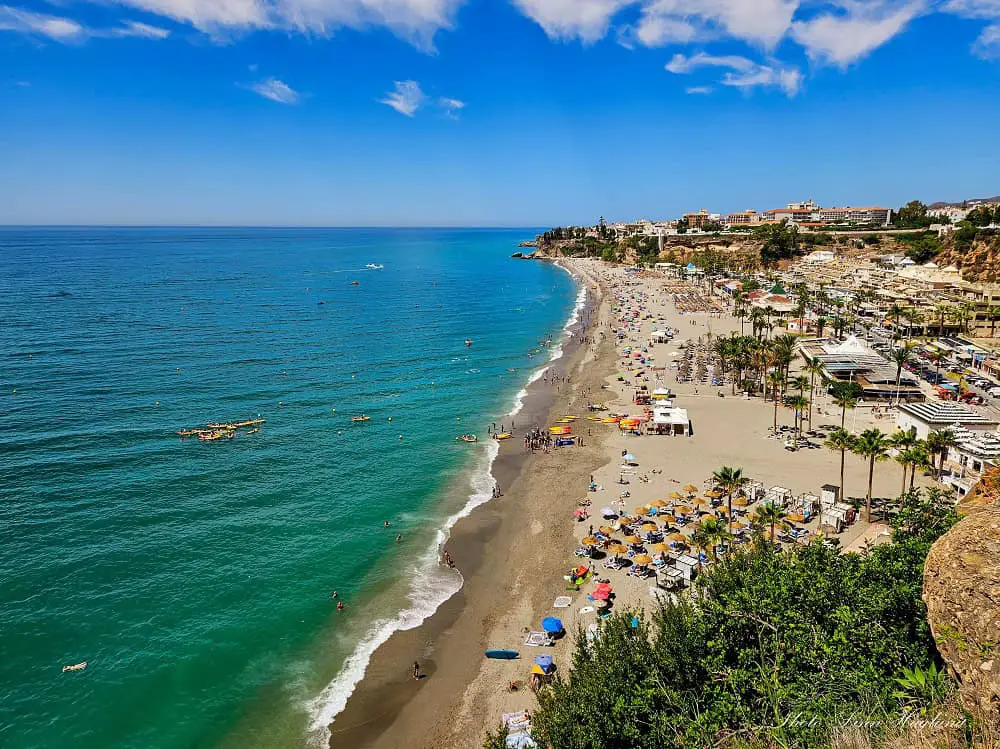
Casares and Baños de Hedionda
If you’re looking for a traditional white mountain village, Casares is the place to go. There are plenty of things to do in Casares like seeing the views from the old castle ruins, admiring the birds of prey circling above your head, and getting lost in the whitewashed streets.
Casares is one of the beautiful, white villages in Andalucia blessed with places to visit nearby like the Corominas Dolmens and the ancient Roman baths of Hedionda.
It is said that the thermal waters in Hedionda cured Julius Cesar of a skin disease. Whether it’s true or not, it’s a really cool place to go for a dip. It’s free to enter and the bath itself is surrounded by nature making it the perfect little getaway.
There are also plenty of hiking routes around Casares including the unique karst landscape of Canuto de la Utrera.

Sierras Subbeticas
The Sierras Subbeticas is a completely underrated mountain chain that deserves way more attention if you ask me. We’ve spent plenty of time hiking there and visiting small towns and villages and will go back in a heartbeat any day.
I highly recommend going on a road trip of the Sierras Subbeticas to get the most out of the unique geological area that was once the seabed of the prehistoric Tethys Sea. It is now protected by UNESCO.
Visit villages like Zuheros where you can explore the prehistoric Cueva de los Murcielagos and hike in the beautiful protected mountains.
Priego de Cordoba is jam-packed with historical sites, Roman-inspired fountains, and beautiful whitewashed neighborhoods filled with colorful pot plants.
In Rute, you can get a taste of the famous patios of Cordoba province and taste their magnificent Anis. There are also fantastic hiking routes straight from the village.
If you’re an avid hiker, make sure you get a permit to hike La Tiñosa, which is the highest peak in Cordoba Province (1570m.) It’s a stunning hike from Las Lagunillas, though it’s a little bit challenging the last few hundred meters, the views will take your breath away!
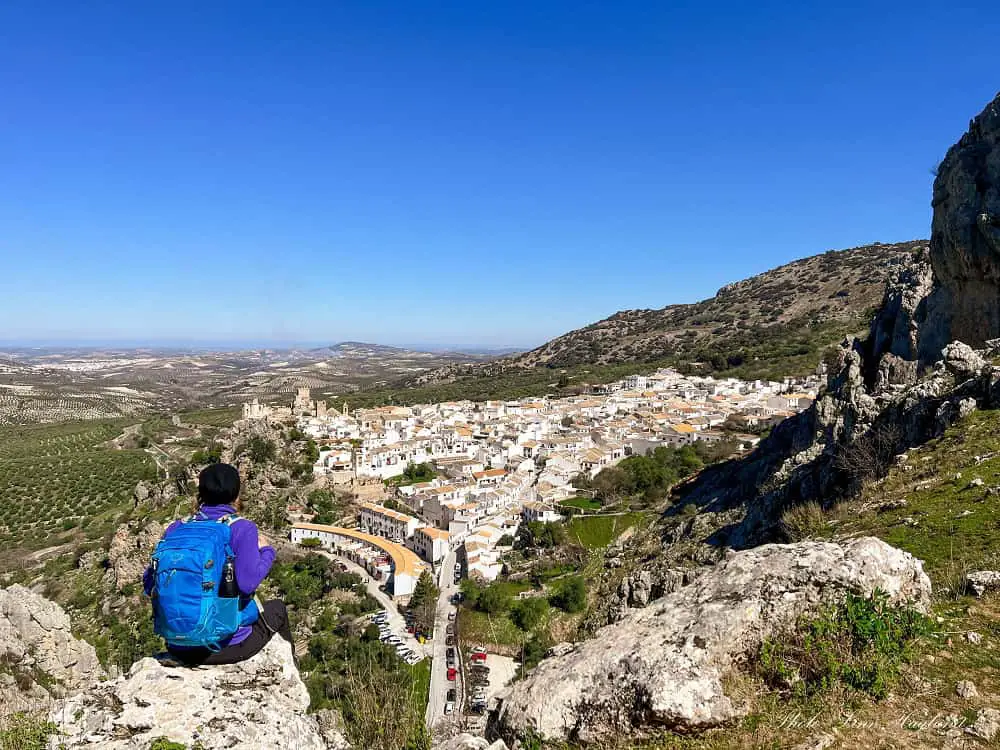
The Alhambra in Granada
The Alhambra in Granada is no doubt one of the absolute highlights in southern Spain. The impressive Arab complex first served as a defensive fortress and later a royal residence.
The visit includes the Nasrid Palace, the Alcazaba, and the Generalife Gardens. It’s a stunning complex that you can easily spend hours exploring. I highly recommend taking this guided tour of the Alhambra to get the most out of your visit.
For the ultimate experience, make sure you book a room at Alhambra Palace Hotel which is set within the Alhambra’s walls.

Marbella
Marbella is a wonderful city on Costa del Sol, mainly recognized for its luxurious Puerto Banus marina where you’re likely to see a celebrity or two.
But there are many more things to do in Marbella than look at luxury yachts and shop for high-end brands. Marbella Old Town is super charming and holds many lovely squares, like Plaza de los Naranjos, and nice restaurants and cafés among cobbled streets and boutique shops.
The beaches in Marbella are also fantastic and you can hop on any Marbella boat tour to dolphin watch, snorkel, or relax with a cava on the sun deck.
Marbella’s party scene is also among the best in Andalucia with pumping beach clubs like Nikki Beach lining the coastline. Marbella is truly a fun summer destination, but even in winter, there are a lot of things going on with Christmas Markets and local festivities.
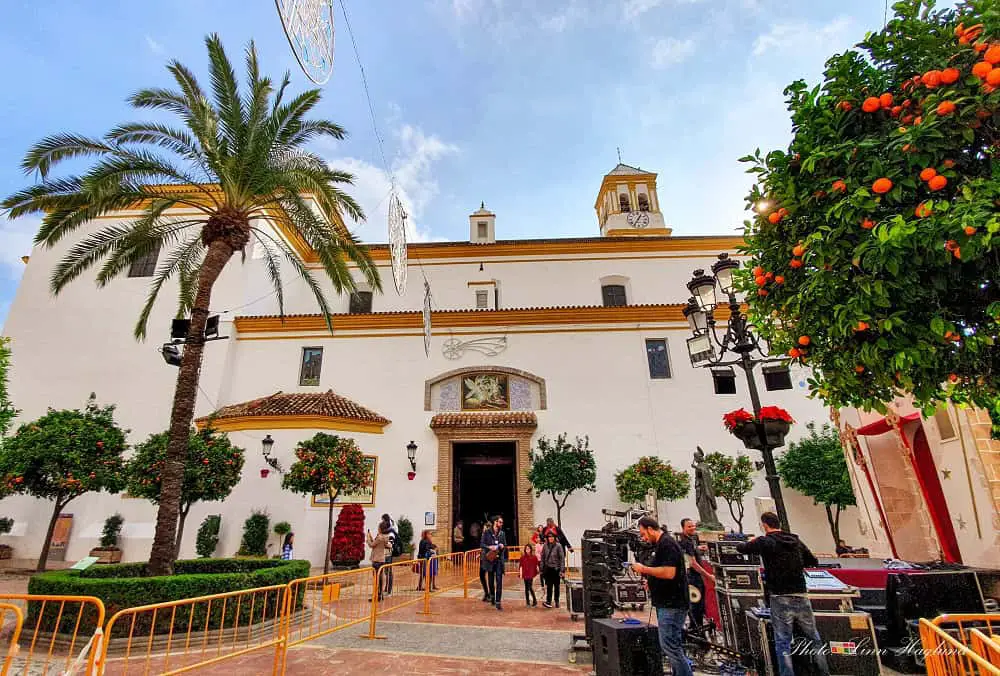
Cadiz
Cadiz is one of the most underrated coastal cities in Andalucia and I’d say it’s one of the best places to visit in the south of Spain for anyone interested in history, surfing, and a local vibe.
The laidback city is small and walkable with plenty of attractions like Cadiz Cathedral, Torre de Tavira where you can see epic city views and the coastal forts of Castillo de Santa Catalina and Castillo de San Sebastian.
The beaches in Cadiz are also top-notch, especially the iconic La Caleta Beach which is set right off the old town. As you can tell, there are plenty of fun things to do in Cadiz and besides, you can enjoy Andalusian food and drinks at local prices!
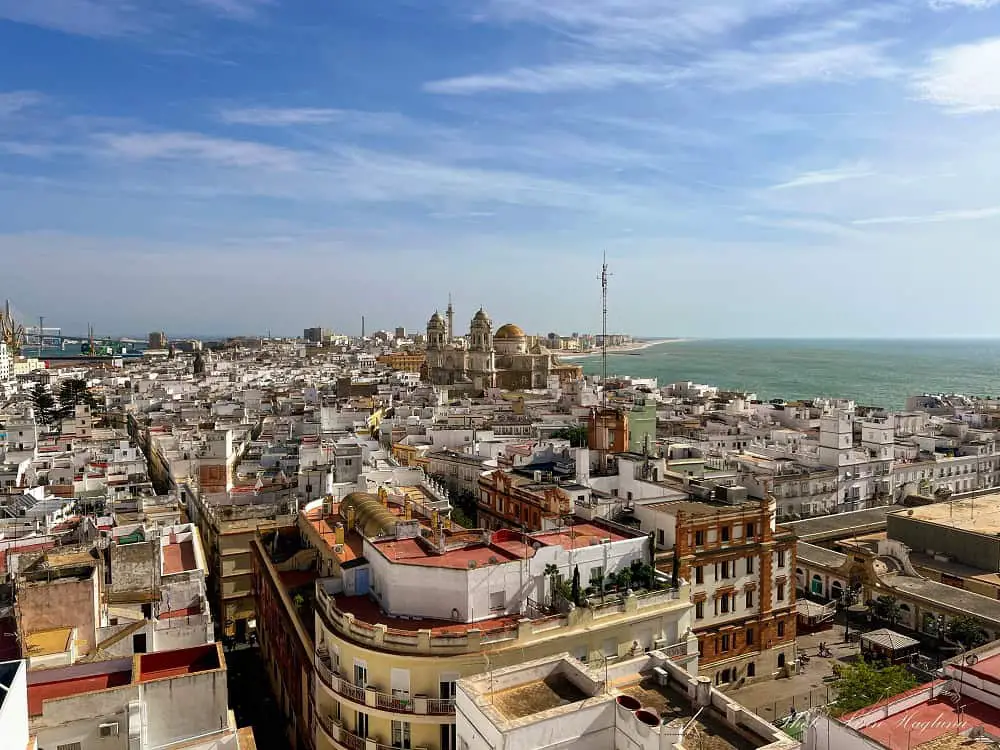
Mijas Pueblo
Mijas Pueblo is one of the must-see Andalucia villages, perfectly whitewashed with colorful pot plants and spectacular coastal views.
Despite its small size, there are plenty of things to do in Mijas Pueblo. There are a few interesting museums where you can stroll through a house museum or explore everything miniature.
Mijas Pueblo also has its own chocolate factory and you can join a chocolate-making class if you want to bring home some unique souvenirs.
There are also a wealth of hiking trails departing from Mijas Pueblo from easy to challenging, mostly because they are quite steep. The highest peak is Pico de Mijas, though my favorite is Pico Mendoza, locally referred to as Pico Puerto Malaga or Cerro Malaga.

Jerez de la Frontera
Calling all sherry lovers! Jerez de la Frontera is one of the absolute best places to take a sherry tasting tour as one of the cities of Andalucia’s Sherry Triangle.
But there are more things to do in Jerez de la Frontera like visiting Jerez Cathedral and the Alcazar where you also can visit the Camara Obscura.
The city is located right between Seville and Cadiz and is one of those places that make you feel like you’re in the real Andalucia. No over tourism and no tourist prices. Just plain local.
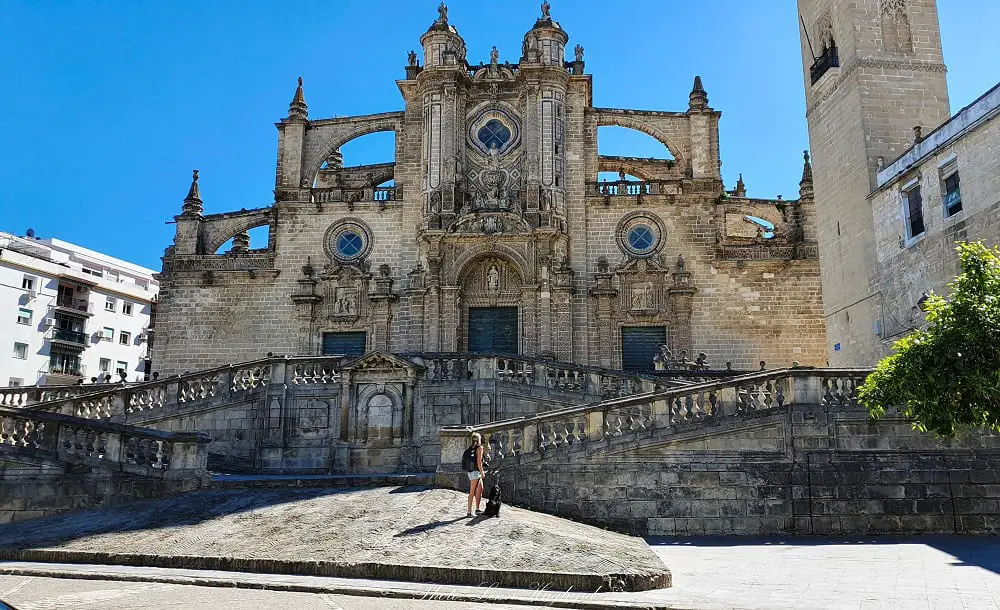
Estepona
If you’re looking for a lesser touristy coastal town, head to Estepona. We’ve spent a lot of time there, mainly volunteering at the Adana Dog Shelter in the period we adopted Baby Atlas, but that also gave us plenty of time to get to know this lovely town.
There are so many wonderful things to do in Estepona with its quaint marina, flowery streets, and majestic street art scene.
The Orchidarium is also interesting to visit with so many different orchids in a small and lush tropical space. If you prefer exploring nature outside, Estepona’s mountains are filled with water holes, waterfalls, and lush ravines for swimming in summer and hiking in winter.
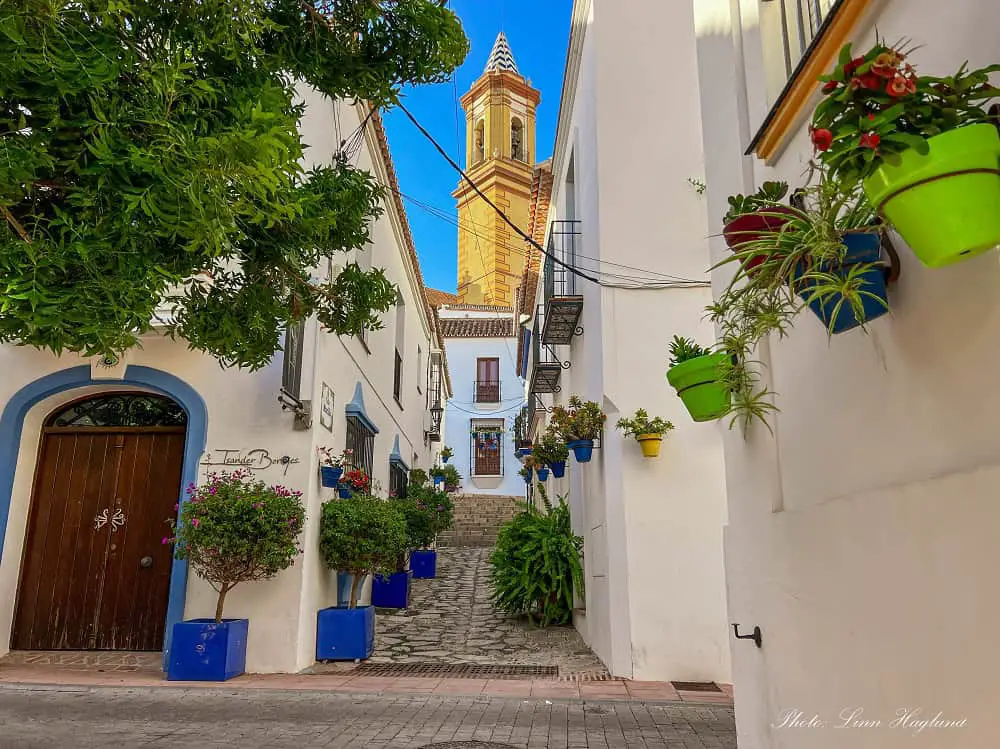
Sierra Nevada National Park
Whether you’re into hiking or skiing, you’ll love Sierra Nevada National Park. It is home to Europe’s southernmost ski resort with slopes descending Pico Veleta, the second-highest 3000-meters peak in the national park. Skiing in Sierra Nevada is fantastic with a long season normally running from late November to late April.
In the lower Sierra Nevada, there are fun hikes like Los Cahorros de Monachil and Vereda de la Estrella. Through the summer months, I highly recommend climbing Mulhacen, the highest peak in the peninsula and if you’re up for a challenge, add the surrounding mountains like Veleta and Alcazaba to your hiking itinerary.
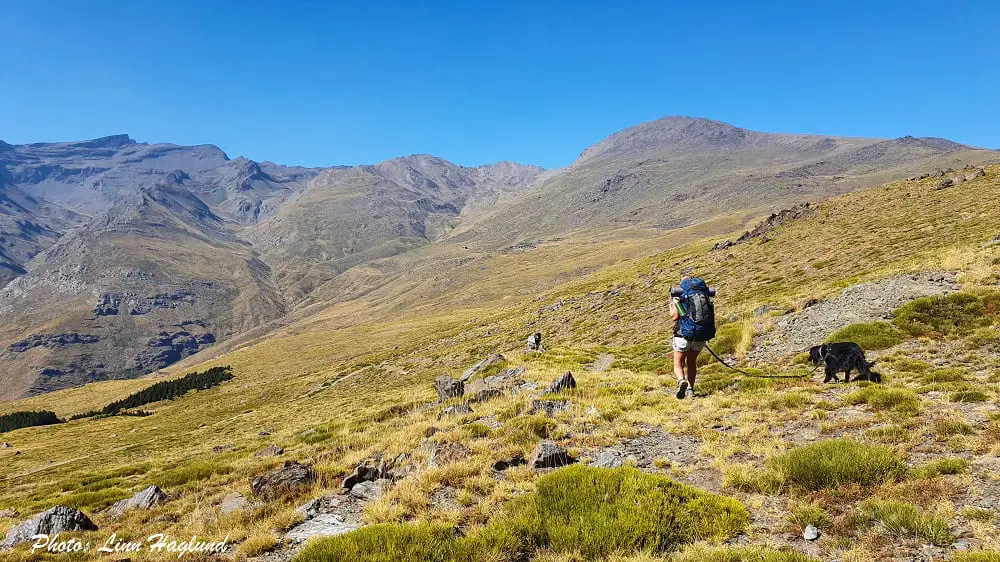
Frigiliana
Frigiliana is yet another picture-perfect pueblo blanco overlooking Costa del Sol’s blue waters. Located only a 10-minute drive from Nerja, there are plenty of things to do in Frigiliana, especially if you enjoy hiking.
Trails like Rio Higueron and Acequia del Lizar go straight from the village and offer splendid nature experiences.
The village itself is hilly with narrow streets winding up through boutique shops and restaurants with plenty of benches to catch a breath and take in the views.
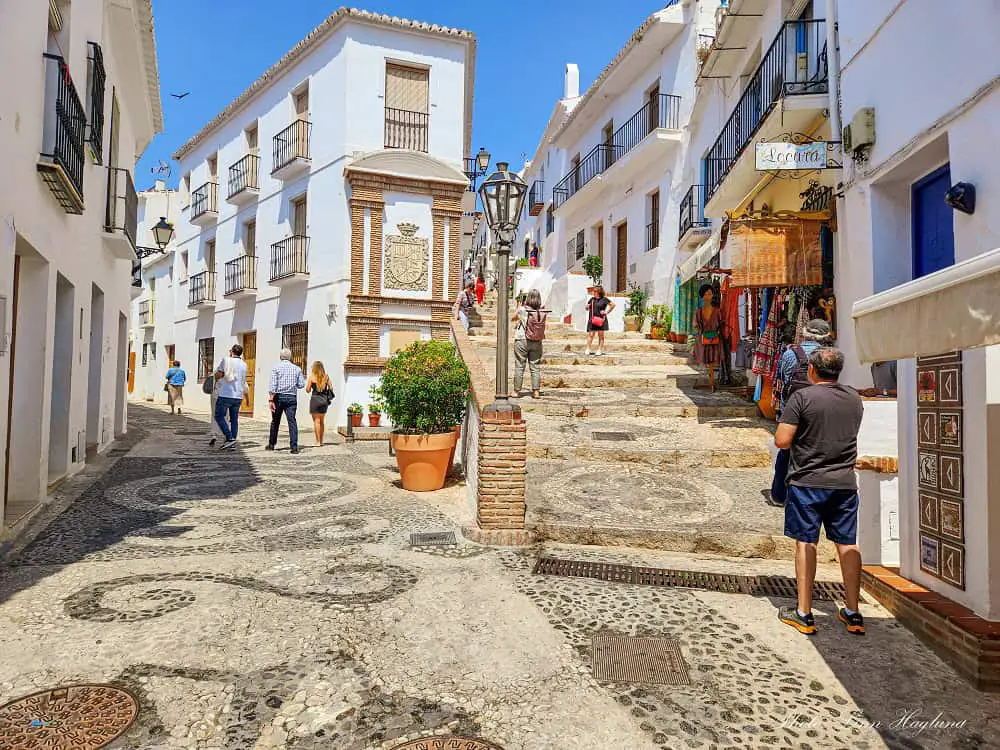
Costa Tropical
Costa Tropical is one of the lesser-known coasts in Andalucia, belonging to Granada Province. What I love about it is mainly the more local feel to it – mostly Spanish tourists trump the foreigners, though it’s getting more and more popular – and the crystal-clear water.
Many beaches are more rocky than in Costa del Sol, thus you can see straight through, but there are also beautiful sandy beaches in places like Almuñecar and Salobreña.
Smaller beach towns like Calahonda and La Herradura are wonderful for kayaking and hiking while one of Andalucia’s best-hidden gems, Torrenueva boasts the first hanging bridge over the Mediterranean in Spain and some of the finest beaches in Granada.
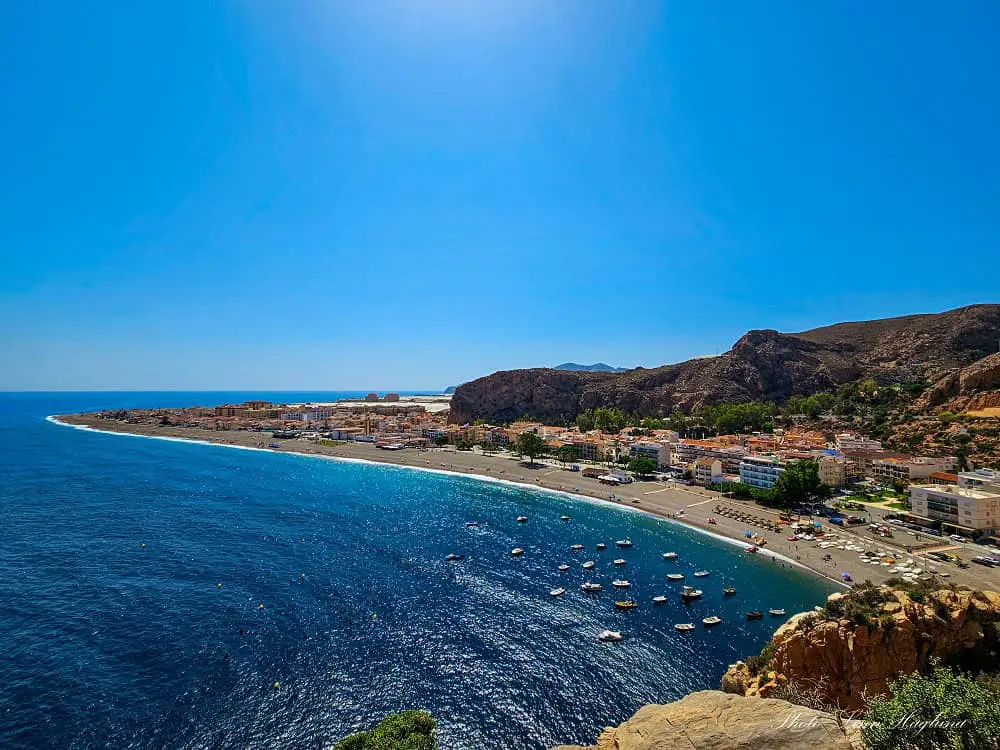
Sierra Norte de Sevilla
If you’re looking for lush green forests with flowing rivers and refreshing waterfalls without the crowds, look no further than Sierra Norte de Sevilla. Only an hour north of Seville, you find this jewel with plenty of easy hiking routes and lovely small towns.
There, you’ll get to explore the places where the locals travel to get out of the city. With natural wonders like Cerro del Hierro and the artificial beach in San Nicolas del Puerto town, there are plenty of things to do.
I also recommend walking or cycling the Via Verde as you will pass most of the main attractions, including a detour to the mesmerizing Huéznar waterfalls.

Baños de la Encina
Baños de la Encina is one of the places I accidentally found on a road trip by looking a the map, seeing a castle, and taking a detour.
The best detour I took on the entire road trip through Jaen Province. It’s a charming little village with a fantastic 10th-century castle.
You can easily visit the village on a day trip from Jaen or on the way to Ubeda and Baeza as it only needs a few hours to explore. But it’s definitely worth it!
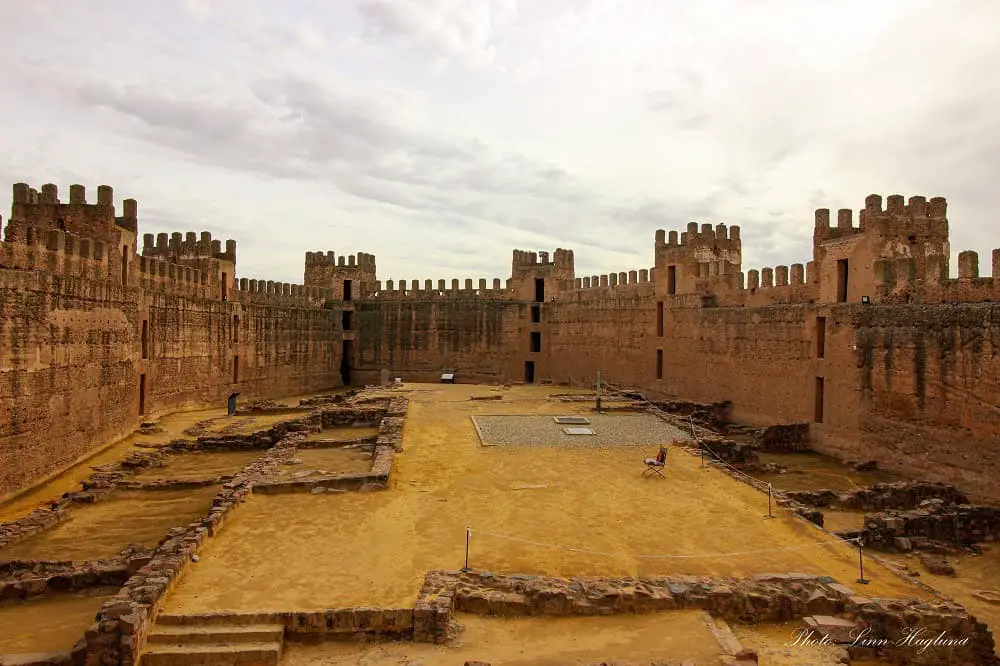
Sierras de Cazorla, Segura y Las Villas Natural Park
Likely my favorite natural park in Andalucia, Sierras de Cazorla, Segura y Las Villas Natural Park, has so much to offer.
I recommend basing yourself in Cazorla, as there are several great hikes you can take straight from the village, like Rio Cerezuelo and Pico Gilillo. There are also several castles within walking distance.
While there are loads of things to do and see, I highly recommend hiking Rio Borosa as the most beautiful hike in the natural park.
It takes you along the river, on a boardwalk pinned to the mountain, and to several waterfalls before it winds up the mountain and through a long tunnel where I recommend bringing a headlamp to see where you go. Definitely a highlight!

Bolonia Dunes and the Baleo Claudia Ruins
Bolonia dunes and beach are absolutely mesmerizing and only a short drive from Tarifa. The massive sand dune is set on one side of the beach offering sweeping views of the bay and even across to Africa.
There are some facilities on the beach, but most of it is completely wild. I love that you have the chance to choose what you want.
Right behind the beach, you find the 2nd-century BC ruins of Baleo Claudia, an old Roman fishing settlement. It’s cool to see the ruins straight from the beach, though I highly recommend visiting the museum and learning some history.
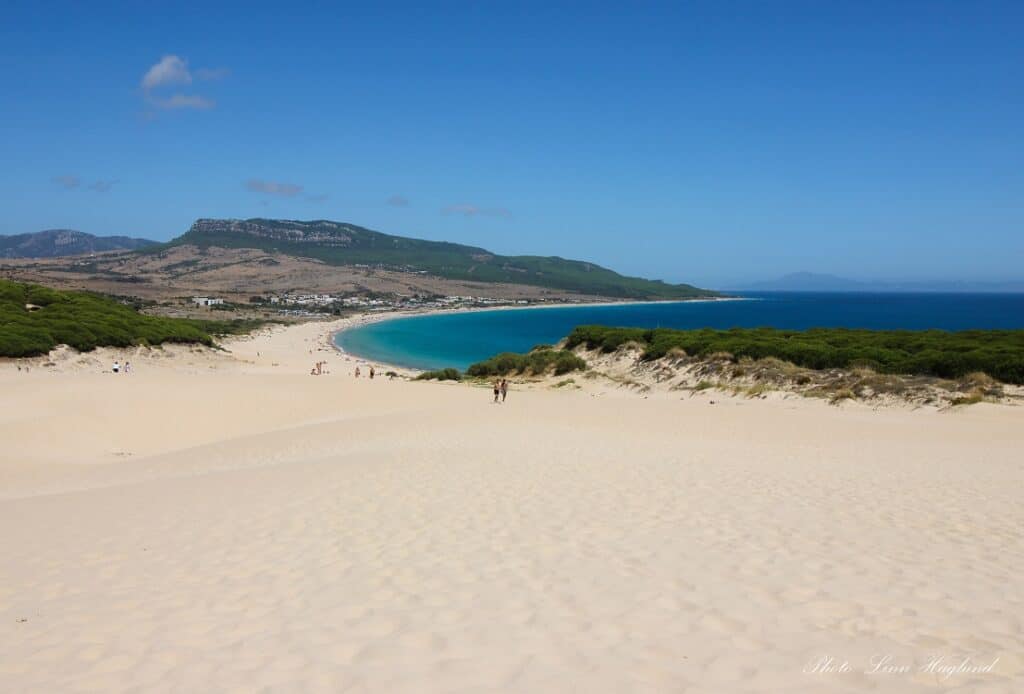
Lucena
Lucena is one of the places in Andalucia that surprised me the most. First of all, because I had never heard of it, I just found it on the map and decided to check it out, but secondly, because there are so many things to do in Lucena.
The city center is jam-packed with splendid churches and palaces worth entering and a city center castle with views. If you head outside the old town, you can visit the Jewish Necropolis and old Roman remains.
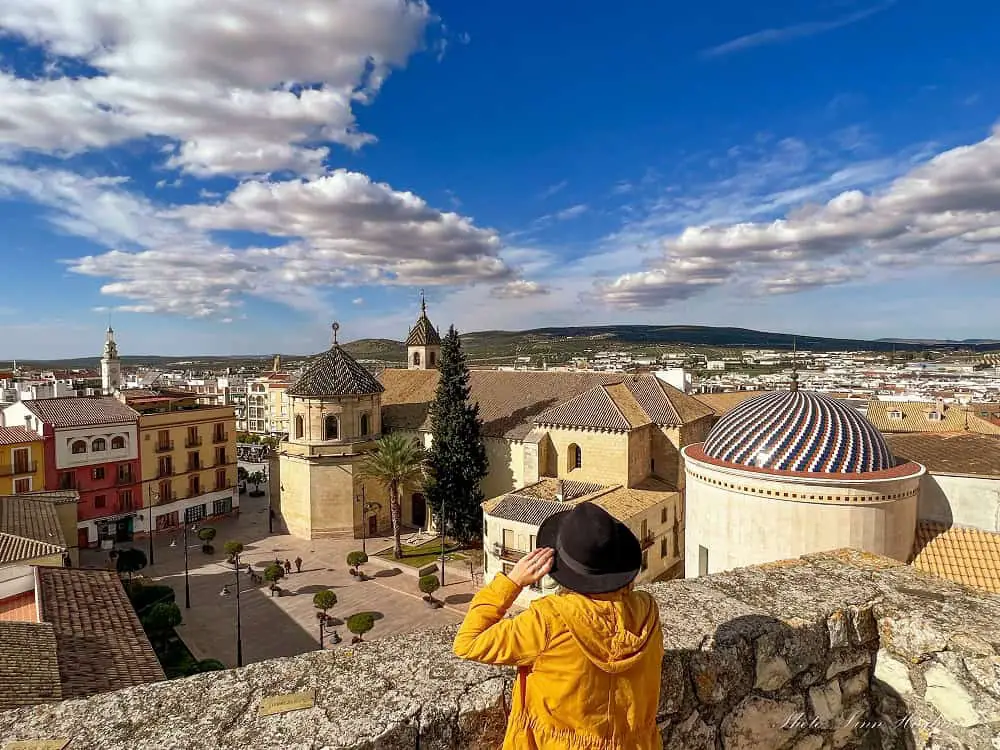
Reflections on
There are so many epic Andalucia destinations to discover and no matter if you prefer history, nature, or culture, there is something for you.
These are just my picks among the best places to visit in Andalucia, but I can assure you there are plenty more places worth your attention. But we all gotta start somewhere, right?
Happy travels!
